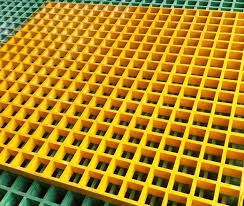loading...
- No. 9, Xingyuan South Street, Dongwaihuan Road, Zaoqiang County, Hengshui, Hebei, China
- admin@zjcomposites.com
- +86 15097380338
- Welcome to visit our website!
Effective Solutions for Treating Well Water for Safe Drinking and Usage
Well Water Treatment Systems Ensuring Safe and Clean Water
Well water is a vital resource for millions of people across the globe. Many households rely on wells for their drinking water, irrigation, and other daily needs. However, the quality of well water can vary significantly depending on factors such as location, depth, and surrounding environment. Contaminants can seep into water supplies, which necessitates the implementation of effective well water treatment systems. This article will explore the importance of these systems, the common contaminants found in well water, and the various treatment options available.
Importance of Well Water Treatment Systems
The primary reason for treating well water is to ensure it is safe for human consumption and use. Contaminated water can lead to serious health issues, including gastrointestinal diseases, neurological disorders, and other acute and chronic illnesses. Moreover, specific contaminants can affect water taste, odor, and appearance, making it unpalatable for everyday consumption. Therefore, having a well water treatment system is crucial for safeguarding health and improving the quality of life.
Common Contaminants in Well Water
Well water can harbor a variety of contaminants, both natural and man-made. Some of the most common contaminants include
1. Microorganisms Bacteria, viruses, and parasites can contaminate well water, primarily from surface runoff or faulty septic systems. Escherichia coli (E. coli) and Giardia lamblia are notable pathogens that can pose severe health risks.
2. Nitrates and Nitrites Often originating from agricultural runoff, fertilizers, and septic systems, elevated levels of nitrates can be especially dangerous for infants, leading to a condition known as methemoglobinemia or “blue baby syndrome.”
3. Heavy Metals Contaminants such as lead, arsenic, and mercury can seep into groundwater from industrial activities, mining, or natural geological processes. Long-term exposure to these metals can result in significant health concerns.
4. Hardness Minerals High concentrations of calcium and magnesium can cause your water to be hard, leading to scale buildup in pipes and appliances and reducing the effectiveness of soaps and detergents.
well water treatment systems

5. Volatile Organic Compounds (VOCs) Chemicals from industrial processes, pesticides, and other sources can find their way into well water, presenting a range of potential health risks.
Types of Well Water Treatment Systems
Several treatment methods are available to combat the various contaminants found in well water. The selection of a system depends on the specific contaminants present and the user's needs. Some popular treatment options include
1. Reverse Osmosis (RO) Systems RO systems effectively remove many contaminants, including heavy metals, microbes, and dissolved solids, by pushing water through a semi-permeable membrane.
2. Ultraviolet (UV) Disinfection UV systems use ultraviolet light to kill or inactivate a wide range of microorganisms without the use of chemicals, making it a safe solution for disinfection.
3. Activated Carbon Filters These filters are excellent for improving taste and odor and removing many chlorine byproducts, VOCs, and some heavy metals.
4. Water Softeners For hardness issues, water softeners utilize ion exchange to remove calcium and magnesium, providing users with soft water.
5. Distillation Units These systems boil water to create steam, which is condensed back into liquid form, leaving most contaminants behind.
Conclusion
Investing in a well water treatment system is crucial for ensuring the safety and quality of your water supply. By regularly testing your well water and selecting the appropriate treatment solution, you can protect your health and the health of your family. Clean water is not just a convenience; it is a necessity for a healthy life.
-
GRP Structures: The Future of Lightweight, High-Performance EngineeringNewsJun.20,2025
-
FRP Water Tank: High-Performance Storage for Corrosive and Clean Water SystemsNewsJun.20,2025
-
FRP Square Tube: The New Industry Standard for Chemical and Structural ApplicationsNewsJun.20,2025
-
FRP Pultruded Profiles: The Ultimate Choice for Lightweight Structural StrengthNewsJun.20,2025
-
FRP Handrails: The Safer, Smarter, and Stronger Choice for Modern InfrastructureNewsJun.20,2025
-
FRP Grating: The Smart Solution for Durable, Lightweight Industrial FlooringNewsJun.20,2025
-
Why Choose a Galvanized Water Tank for Your Storage NeedsNewsMay.21,2025
